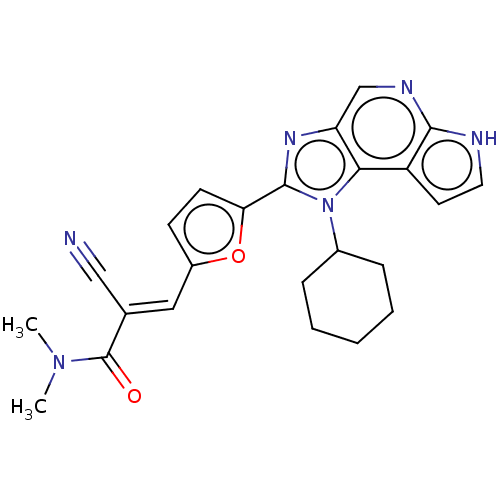Affinity DataIC50: 0.127nMAssay Description:A commercial assay by Reaction Biology Corp.More data for this Ligand-Target Pair
In DepthDetails
Affinity DataIC50: 764nMAssay Description:Inhibition of JAK3 in mouse BaF3 cells assessed as reduction in cell viability by MTT assayMore data for this Ligand-Target Pair
Affinity DataIC50: 790nMAssay Description:Inhibition of JAK3 in mouse BaF3 cells assessed as reduction in cell viability in presence of 0.1 mM H2O2 by MTT assayMore data for this Ligand-Target Pair
Affinity DataKd: 1.34nMAssay Description:The assay is based on the displacement of a reporter probe by a test compound. Close proximity of the probe and the targeted kinase result in emissio...More data for this Ligand-Target Pair

